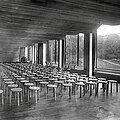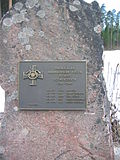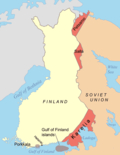
Back بوابة:فنلندا Arabic Portal:Finlàndia Catalan Portál:Finsko Czech Portal:Finnland German Portal:Finlandia Spanish Portail:Finlande French Portal:Finlandia Galician Portál:Finnország Hungarian Gátt:Finnland Icelandic Portale:Finlandia Italian
The Finland Portal


Finland, officially the Republic of Finland, is a Nordic country in Northern Europe. It borders Sweden to the northwest, Norway to the north, and Russia to the east, with the Gulf of Bothnia to the west and the Gulf of Finland to the south, opposite Estonia. Finland has a population of 5.6 million. Its capital and largest city is Helsinki. The majority of the population are ethnic Finns. The official languages are Finnish and Swedish; 84.1 percent of the population speak the first as their mother tongue and 5.1 percent the latter. Finland's climate varies from humid continental in the south to boreal in the north. The land cover is predominantly boreal forest biome, with more than 180,000 recorded lakes.
Finland was first settled around 9000 BC after the last Ice Age. During the Stone Age, various cultures emerged, distinguished by different styles of ceramics. The Bronze Age and Iron Ages were marked by contacts with other cultures in Fennoscandia and the Baltic region. From the late 13th century, Finland became part of Sweden as a result of the Northern Crusades. In 1809, as a result of the Finnish War, Finland was captured from Sweden and became an autonomous grand duchy within the Russian Empire. During this period, Finnish art flourished and the independence movement began to take hold. Finland became the first territory in Europe to grant universal suffrage in 1906, and the first in the world to give all adult citizens the right to run for public office. Following the Russian Revolution of 1917, Finland declared its independence. A civil war was fought in Finland the following year, with the Whites emerging victorious. Finland's status as a republic was confirmed in 1919. During World War II, Finland fought against the Soviet Union in the Winter War and the Continuation War, and later against Nazi Germany in the Lapland War. As a result, it lost parts of its territory to the Soviet Union but retained its independence and democracy. (Full article...)
Selected article -
The Turku tramway network was the first tram system to be operated in Finland, and was the second-to-last first generation tram system in Finland. It was operated as horse tramway from 1890 until 1892, and as an electrified tramway from 1908 until 1972. Prior to 1919 the tram system was owned by private interests, and from that year onwards by the City of Turku until closure of the system.
The possible recreation of the tram network and/or a creation of a light rail network have been discussed since the (second) closure of the tram system in 1972. In December 2009 the Turku City Council made the decision that a light rail system (Finnish: pikaraitiotie, "fast tramway") system would be realised in the city after an intermediate phase of bus rapid transit. (Full article...)
Selected image -
Did you know (auto-generated)

- ... that a song about an esports team went viral in Finland?
- ... that the 1972 Finnish film The Sheep Eaters gathered more than a million viewers opposite the 1975 Ice Hockey World Championships match between Finland and the Soviet Union?
- ... that records of transgender people in Finland stretch back to the 19th century?
- ... that Sodankylä Old Church is one of the oldest preserved wooden churches in Finland?
- ... that Finnish-American model Selene Mahri married three millionaires and is credited with inventing the saying "Marriage is a question of give and take. You give. I take"?
- ... that Turku remained the largest city in Finland after three quarters of it burned down?
WikiProjects

You are invited to participate in Finland WikiProject, a WikiProject dedicated to developing and improving articles about Finland.
More did you know -
- ...that when completed in 1967, MS Finlandia was the largest ferry in the world?
- ...that the Pysähdy ajoissa - Stanna i tid ("Stop in time") traffic campaign was the result of the public response to a road death of a nine-year-old girl in Finland?
- ...that the Finnish Association of Graduate Engineers has been in charge of publishing Finland's ethical guidelines on engineering for over 40 years?
- ...that Penedo, a small town in Brazil was colonized by immigrants from Finland?
- ...that the Wärtsilä Turku shipyard in Finland built five state-of-the-art cruiseferries for the Black Sea Shipping Company, Soviet Union, in 1975-1976?
The Continuation War, also known as the Second Soviet–Finnish War, was a conflict fought by Finland and Nazi Germany against the Soviet Union during World War II. It began with a Finnish declaration of war on 25 June 1941 and ended on 19 September 1944 with the Moscow Armistice. The Soviet Union and Finland had previously fought the Winter War from 1939 to 1940, which ended with the Soviet failure to conquer Finland and the Moscow Peace Treaty. Numerous reasons have been proposed for the Finnish decision to invade, with regaining territory lost during the Winter War regarded as the most common. Other justifications for the conflict include Finnish President Risto Ryti's vision of a Greater Finland and Commander-in-Chief Carl Gustaf Emil Mannerheim's desire to annex East Karelia.
On 22 June 1941, the Axis invaded the Soviet Union. Three days later, the Soviet Union conducted an air raid on Finnish cities which prompted Finland to declare war and allow German troops in Finland to begin offensive warfare. By September 1941, Finland had regained its post–Winter War concessions to the Soviet Union in Karelia. The Finnish Army continued its offensive past the 1939 border during the invasion of East Karelia and halted it only around 30–32 km (19–20 mi) from the centre of Leningrad. It participated in besieging the city by cutting the northern supply routes and by digging in until 1944. In Lapland, joint German–Finnish forces failed to capture Murmansk or cut the Kirov (Murmansk) Railway. The Soviet Vyborg–Petrozavodsk offensive in June and August 1944 drove the Finns from most of the territories that they had gained during the war, but the Finnish Army halted the offensive in August 1944. (Full article...)
General images
In the news
- 14 January 2025 – 2024 Baltic Sea submarine cable disruptions, NATO operations
- At the Summit of Baltic Sea Allies in Helsinki, Finland, NATO Secretary General Mark Rutte announces the establishment of the Baltic Sentry military mission, which will strengthen the protection of critical infrastructure in the region, such as energy and communication cables, from "destabilizing acts". (NATO News)
- 3 January 2025 – 2024 Estlink 2 incident
- A district court in Helsinki, Finland, denies a request to release the impounded oil tanker Eagle S, suspected of damaging the Estlink 2 submarine power cable and carrying sanctioned Russian oil. (Al Jazeera)
- 26 December 2024 – 2024 Baltic Sea submarine cable disruptions, Finland–Russia relations
- 2024 Estlink 2 incident
- Finnish border guards and police detain a Russian vessel suspected of damaging the Estlink-2 submarine power cable yesterday. (AP)
- 25 December 2024 – 2024 Estlink 2 incident
- HVDC submarine power cable Estlink 2, which connects the power grids of Estonia and Finland, suffers an unexplained outage with Finnish Prime Minister Petteri Orpo stating that an investigation into the incident is underway. (AP)
- 18 November 2024 – 2024 Baltic Sea submarine cable disruptions
- The C-Lion1 submarine communications cable across the Baltic Sea between Finland and Germany is damaged in what German officials suspect is sabotage. (The Guardian)
Related portals
Northern Europe
Other countries
Selected panorama -
Topics
Categories
Recognized content
Things you can do
- Add the {{Portal|Finland}} template to existing See also sections of Finland-related articles.
- Tag the talk pages of Finland-related articles with the {{WikiProject Finland}} template. (Tip: Use PetScan to find articles not tagged yet by replacing the category "Finnish films" with another category and adjust "Depth" if needed. This tool is helpful for tagging. See also the list of pages not tagged yet.)
- Rate unassessed and unknown-importance articles according to the guidelines. (This tool is helpful for doing these.)
- Translate a Finnish-language article into English.
- Expand a stub into a full article.
- Help with the articles needing attention (watch) and cleanup.
- Create a requested article (watch).
- Support fresh articles (watch).
- Patrol the recent changes.
- Add requested photos (map)
- Add the following pages to your watchlist:
Associated Wikimedia
The following Wikimedia Foundation sister projects provide more on this subject:
-
Commons
Free media repository -
Wikibooks
Free textbooks and manuals -
Wikidata
Free knowledge base -
Wikinews
Free-content news -
Wikiquote
Collection of quotations -
Wikisource
Free-content library -
Wikiversity
Free learning tools -
Wikivoyage
Free travel guide -
Wiktionary
Dictionary and thesaurus
© MMXXIII Rich X Search. We shall prevail. All rights reserved. Rich X Search

















































![Image 49Lapua Movement supporters beating the "red officer" Eino Nieminen [fi] in front of the Vaasa courthouse during the 4 June 1930 riot. (from History of Finland)](http://upload.wikimedia.org/wikipedia/commons/thumb/6/6a/Eino_Niemisen_pahoinpitely.jpg/120px-Eino_Niemisen_pahoinpitely.jpg)






































































